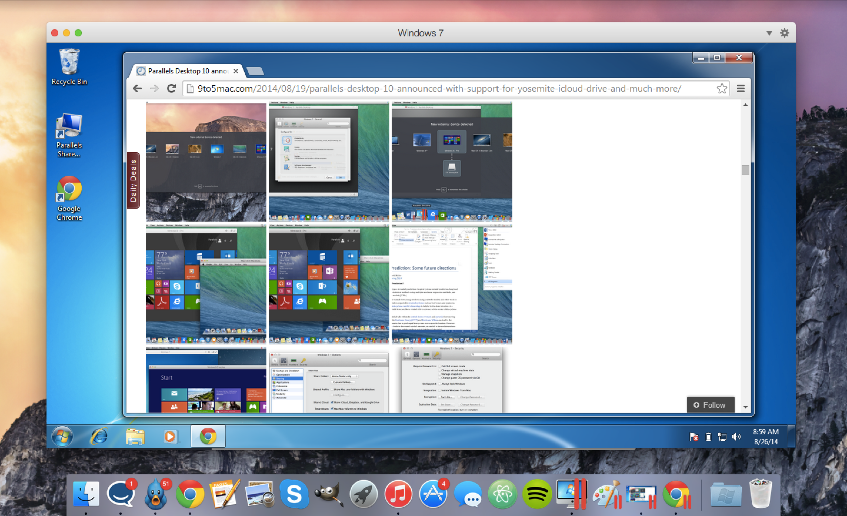

For instance, on my Mac, I’m running Windows XP and Windows 7 Pro using installation disks. In the most typical of situations, Windows is usually the operating system of choice.
#Parallels desktop 10 review install
In order to use Parallels, you will be required to install an operating system. Once you’ve successfully installed Parallels Desktop 7 you’ll be presented with a window providing you options for setting up your new virtual machines. After installation is complete, you’ll be given the opportunity to register and sign up for a Parallels account (recommended if you want to use Parallels Mobile) and activate your product by entering in your serial number. During the process, Parallels will check for updates and download any new updates.

The Installation process is a breeze and should look every bit as familiar as most other Mac installations. Since version 5, it has grown into its own quite nicely adding a new user interface and simplifying most of the processes for managing all your virtual machines. Parallels Desktop 7 is the most recent release of Parallels’ virtualization software, which allows you to run multiple operating systems on a single Mac. In addition, I’ve recently taken Parallels Mobile, Parallels mobile App for iOS, out for a test drive as well and was quite impressed. Having been both a Parallels 5 and VMWare Fusion user for years, I couldn’t wait to see what new features and improvements had made the cut for version 7. Recently, I’ve been given the opportunity to take Parallels Desktop 7 for a spin. Here is a summary of what it has to offer and some feature highlights. Wil Limoges took the most recent version of Parallels Desktop for a spin.


 0 kommentar(er)
0 kommentar(er)
